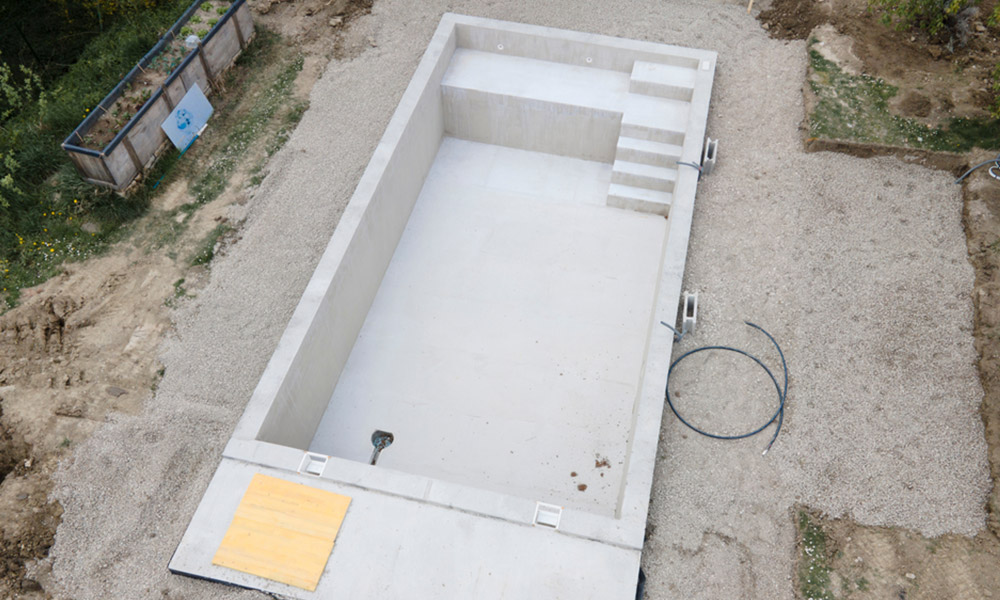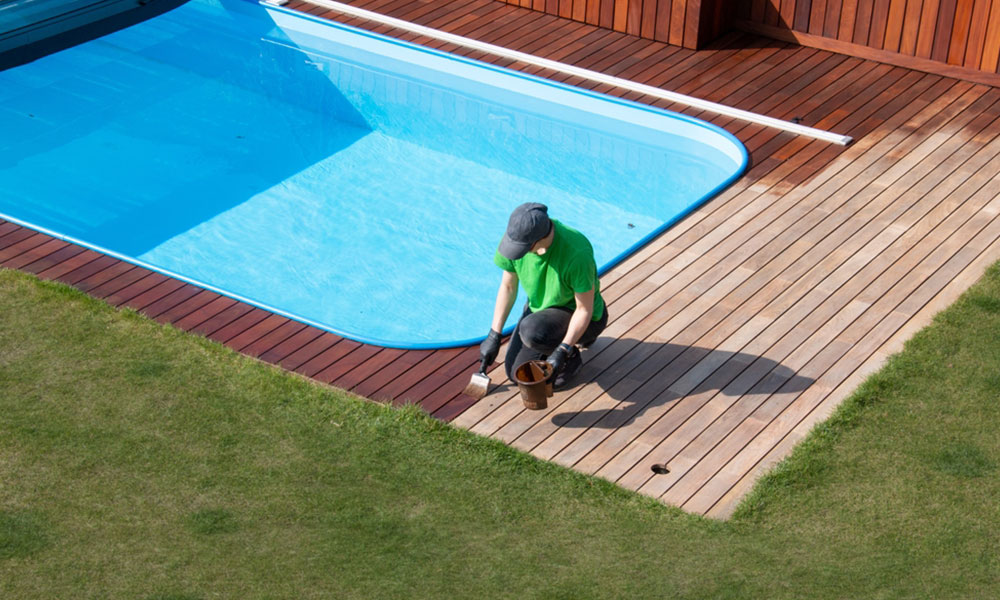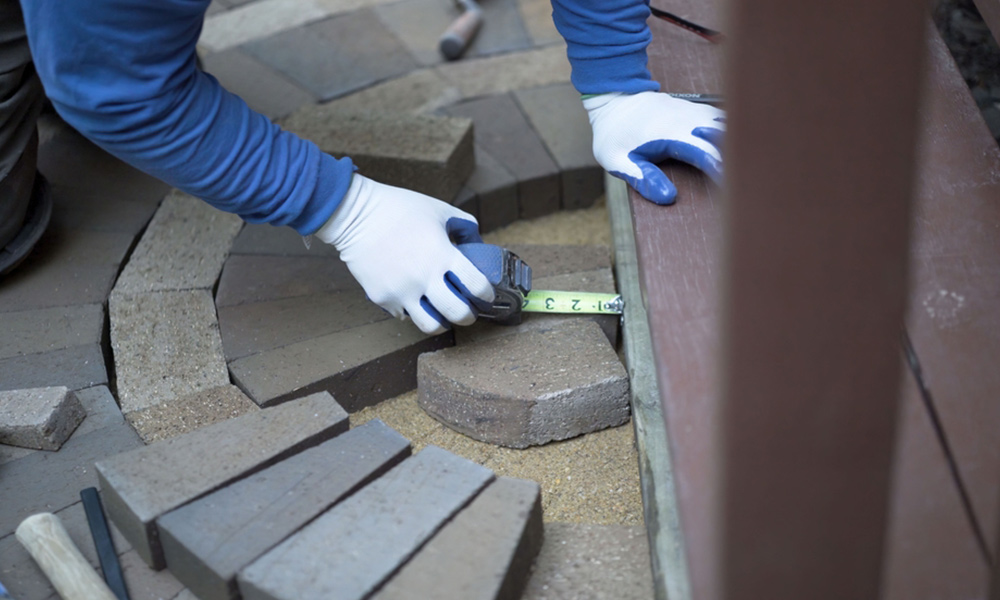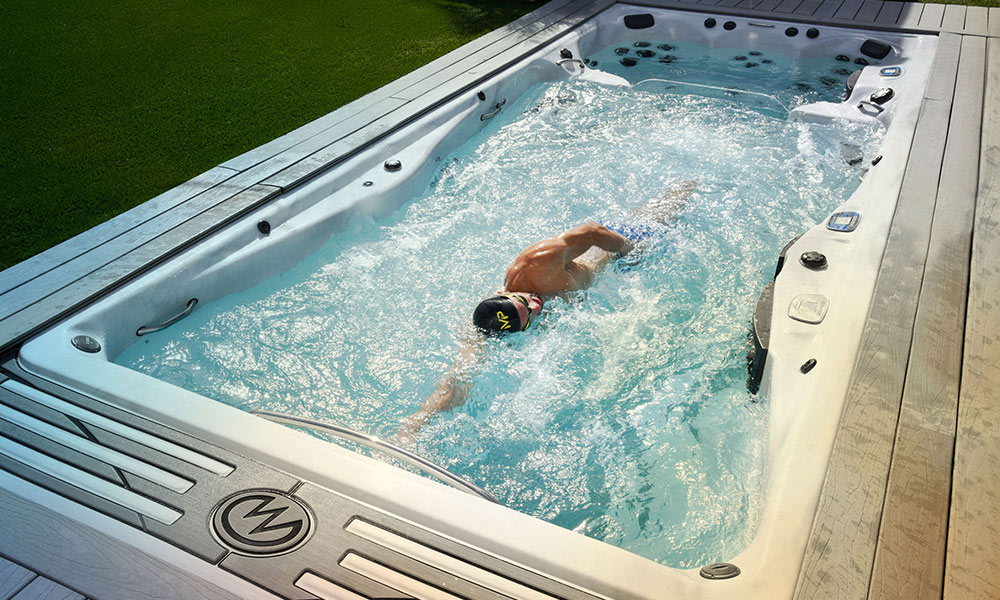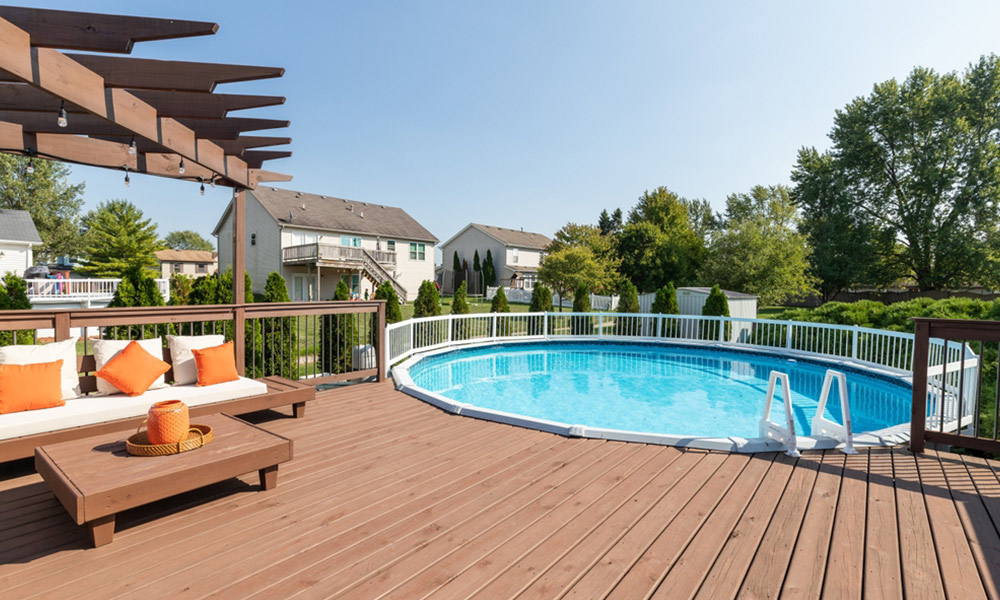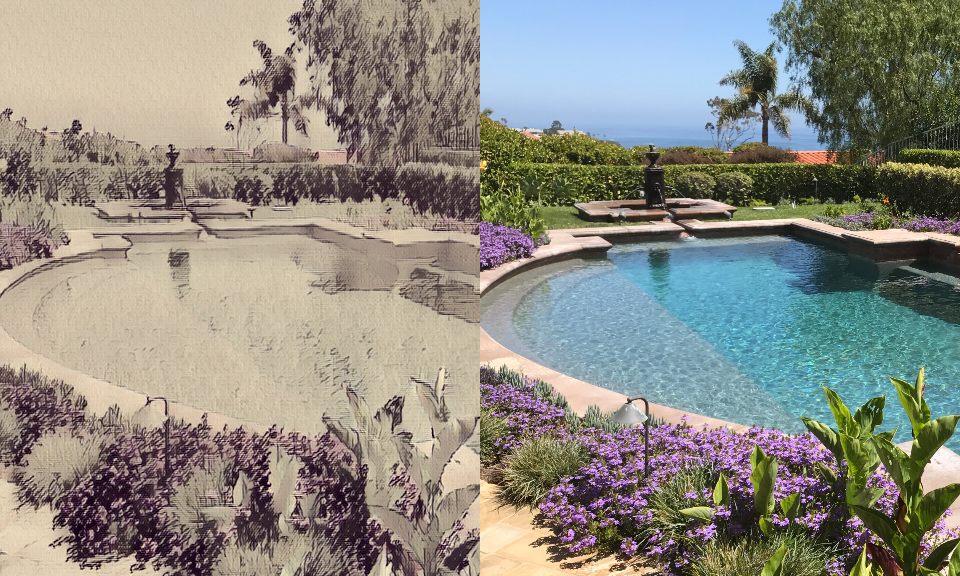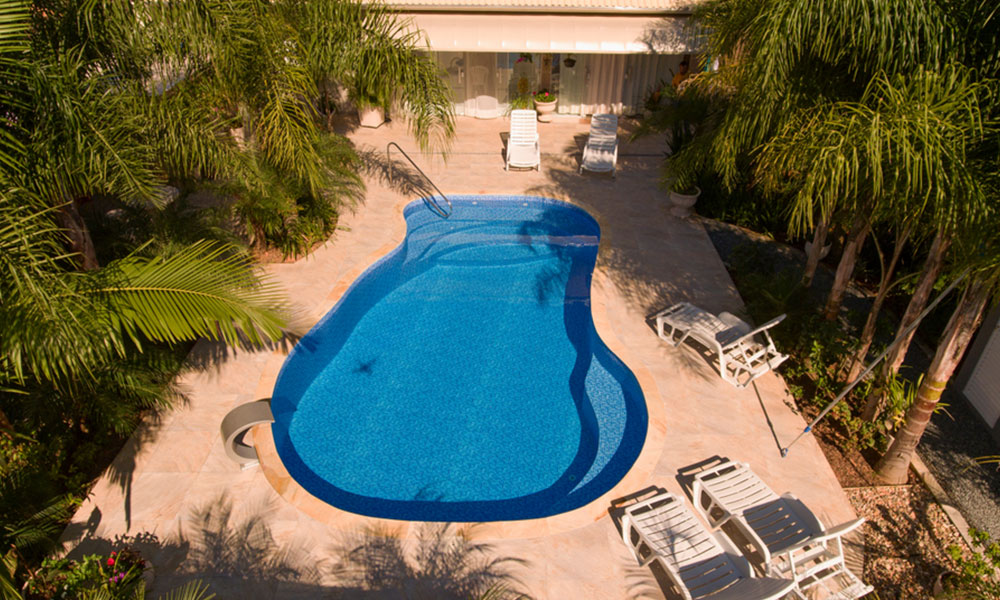Table of Contents
ToggleYou might think that you already know exactly what a concrete pool is. After all, the name does a good job of describing it. And a concrete pool is, in fact, a pool made from concrete. But there are a few more points to consider when you’re weighing the options for a pool of your own. The first is the actual nature of concrete.
What Exactly Is A Concrete Pool?
Concrete is created by mixing an aggregate such as gravel with sand, cement, and water. A new concrete shell is then created for your pool by using that material. Every concrete swimming pool has the same basic components.
There are two different forms of concrete used to reach that singular endpoint – gunite and shotcrete.
Gunite Pools
Gunite is a dry concrete that’s mixed with water within a special sprayer right as it’s being applied to the walls and floor of the pool. Construction of a concrete pool using gunite involves spraying the concrete onto a frame for reinforcement. This essentially creates a hardened concrete shell as the gunite is sprayed onto the pool area. A large hose system shoots the concrete mix right out to form your concrete pool’s shell. This process allows for flexible construction techniques and all the long-term durability you’d expect from concrete.
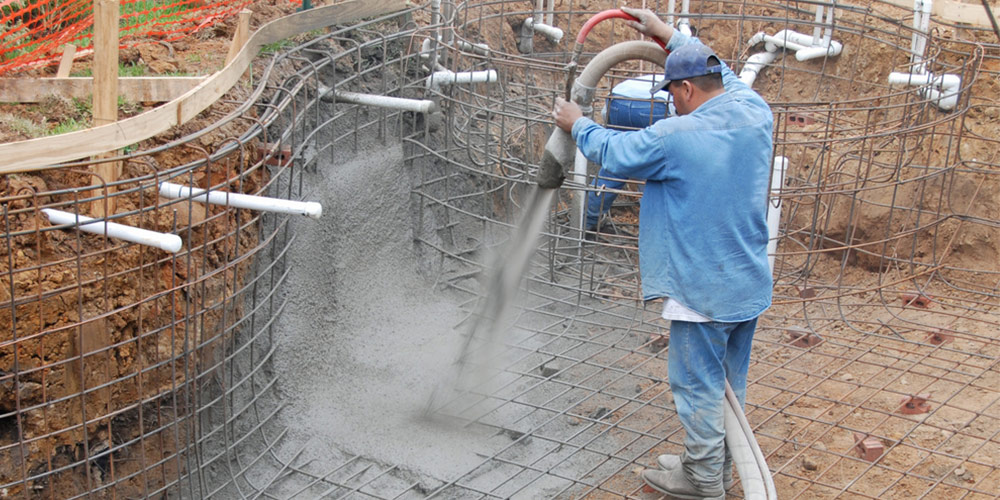
Shotcrete Pools
Shotcrete is another form of concrete and will appear identical to gunite once it’s hardened. The main difference between the two is that shotcrete is a wet mixture while gunite is dry. Shotcrete is typically applied pneumatically by spraying the wet mixture through a hose onto a pre-existing concrete form. And, like gunite, it will eventually harden into a solid concrete whole.
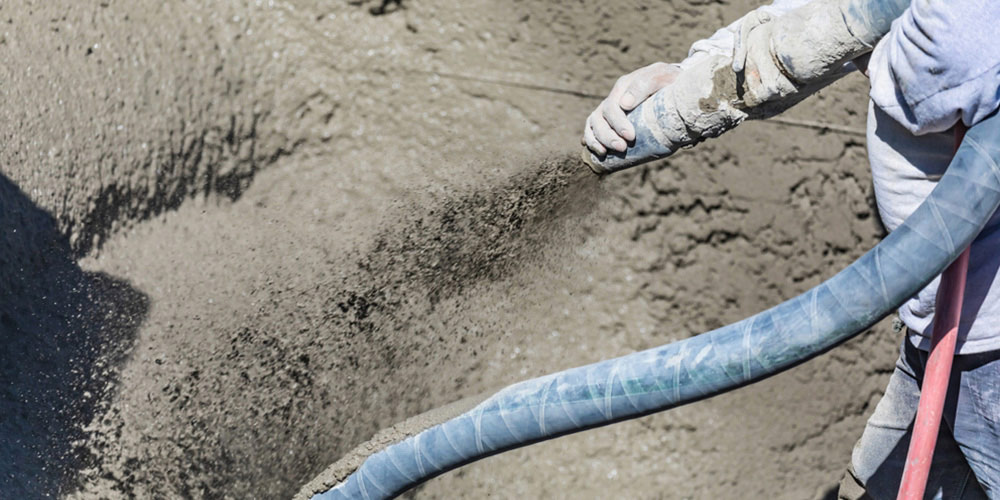
The difference in shotcrete and gunite lies in the timing of water mixing. Shotcrete involves using pre-mixed wet concrete that is propelled through a hose. In contrast, gunite utilizes a dry concrete mix which only combines with water at the nozzle’s tip as it’s applied onto the pool’s ultimate surface.
Construction Process
The final application stage for a concrete pool differs depending on whether you’re going with gunite or shotcrete. But most of the other steps involved in concrete pool construction are going to be the same no matter which option you decide on.
Excavation
The construction begins with an initial excavation. This is the stage where the general shape of your inground pool is created. A crew will dig and roughly shape an area into the form of your future pool. Size is the critical factor in the excavation stage. The bigger your pool the larger your project.
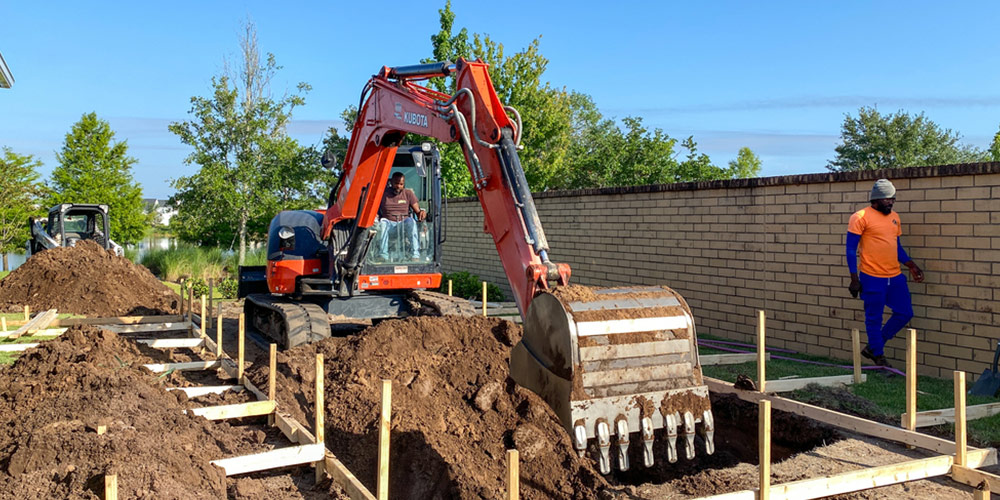
Formwork
As the name suggests, this involves the creation of the pool’s main frame or form. People set up metal or wooden forms to create a general shape for the pool.
Reinforcement
Additional structures are laid out within the formwork during the reinforcement stage. This helps to support and maintain the structure of the concrete once it’s been laid down.
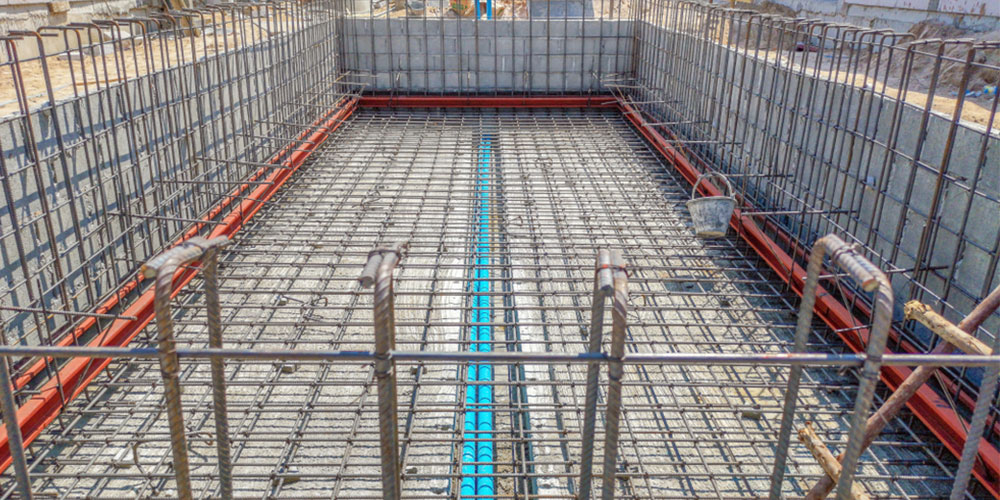
Concrete Application
This is the point where the concrete is actually applied to the reinforced frame constructed in the previous steps. The actual thickness of the concrete will vary on a case-by-case basis. But it’s typically around six to eight inches.
Curing and Finishing
The concrete will dry and undergo additional work during this stage. It’s one of the more entertaining stages for a new pool owner as you’ll be able to really see your aesthetic choices take shape. For example, acid washing, tiles, and other decorations are added during the curing and finishing stage. Finally, the new pool is filled with water and everything will be ready for your first swim.
Advantages of a Concrete Pool
Concrete is one of the most commonly used materials for pool construction. When people think of pools they tend to think of this particular style. And while there are a lot of good reasons for that popularity, the following are among the most significant.
Customization
The fact that concrete is essentially shaped into a design means that you have a huge range of customization options. No matter what your pool design ideas are, you can bring them to life with concrete. People often think of concrete as similar to, say, a sidewalk. But a concrete pool can fit into almost any aesthetic. You can use beautiful tiles, mix plants or decorative rocks, and even add water features.
Durability
Think about how durable concrete is in comparison to almost any other material. After all, it’s one of the go-to options for any construction that needs to last while enduring large amounts of stress. Even the foundation of a house will typically be made of concrete. That long-lasting durability is also seen in a concrete pool. You might need to resurface a concrete pool on occasion. But it’ll last for an incredibly long time with proper care.
Aesthetics
The customization options for a concrete pool can be taken to some incredible levels by stressing aesthetic value. The pool’s finishing options let you leverage a wide variety of different tools to create true works of art. Some of these options include tiles, plaster, and pebbles. But there are so many options that you’re essentially free to bring your imagination to life.
Value Addition
Any pool will add to the value of a property. But a concrete pool, in particular, has additional value due to its longevity. As long as the pool’s properly cared for, it can last for multiple generations. As such, it adds a tremendous amount of value to your property.
Concrete Pool Disadvantages
There’s a lot to love about concrete designs. But at the same time, if they were a perfect one size fits all solution then there wouldn’t be other options on the market. There are a few disadvantages to a concrete design which you should weigh against the advantages.
Higher Build Cost
The steps required to put a concrete pool together might not seem overly involved at first glance. But it’s important to keep scale in mind. Even a small concrete pool takes up a considerable amount of space. That translates into an equally large amount of construction work to build it. And, in turn, this means that the associated costs are just as high.
However, this is also where Viking Capital can help by financing your pool. This ensures that you’re able to get the pool you’ve always dreamed of at a price you can afford.
Long Install Times
The general overview of a concrete pool construction process can also unintentionally hide a major issue – time. Most pool construction projects will take a fairly long time. But a concrete pool also has additional considerations on top of the standard issues with inground pools. One of the most important is how long concrete takes to fully harden and settle in place. You’ll generally need to wait about a month for the concrete to settle, or “cure”, before adding the huge weight of water which if done too early can cause cracking.
Requires Maintenance
Some of the pool maintenance requirements are well known. You’re probably aware that you’ll need to use some form of chemical sanitization. But there’s a lot more to pool maintenance than just the chemicals. For example, many of the landscaping options used in your pool area can also impact the pool’s health.
Plants can add a natural beauty to the area. But they can also spill dirt, leaves, and other debris into your pool. Pool fountains or waterfalls look beautiful. But they also require extra care and attention to maintain. And this concept extends to most elements of your pool. Even different weather conditions will require some extra work. Rain will affect the water chemical balance or even cause the pool to overflow, cold spells can cause heating costs to spike, etc.
More Care With Chemicals
Concrete is a porous material. You probably won’t notice that fact when simply giving it a glance. But you better believe that microorganisms like algae can, and will, find those areas. A porous material, water, and warm temperatures are everything algae could ask for. And keeping algae and other microorganisms from growing in your pool is going to take some careful management of cleaning chemicals. A concrete pool requires you to use more chemicals than you would with other pool types. And, likewise, you’ll need to put some more care into micromanaging them to ensure that they’re all properly balanced.
Requires Resurfacing
The previously mentioned chemicals also bring up an additional problem. Any surface constantly subjected to water, sun, and movement is going to suffer wear and tear over time. But the problem is compounded by the same chemicals that keep it clean. The chemicals which keep the pool clean can also wear down its materials. All of these issues and more will gradually wear away at the pool’s surface layer. And eventually, you’ll need to call in people to fully resurface it. However, this is still a relatively infrequent requirement. A concrete pool generally only needs resurfacing every eight to ten years or so.
Build Costs
Pools are generally quite expensive, and a concrete pool is no exception to that rule. All of the previous points about the construction process and upkeep come with an associated cost. And in general, the average cost of a concrete pool will be somewhere around $75,000. Maintenance costs also need to be taken into account. They’ll usually add another $20,000 onto the pool over a lifetime of ownership. As a rule, concrete is going to be among the more costly options for your pool.
That doesn’t mean that you’re going to be stuck paying those exact numbers. Many of the costs can be cut down by using your environment to your advantage. For example, you can use solar options to help keep your pool heated instead of relying on electricity.

But there are some costs that are fundamental to an inground cement pool. The overall build costs tend to have a lot less wiggle room than the maintenance costs. This is thanks to the fact that you’re working with a single necessary outcome and a single method of getting to that point. An inground pool needs excavation and those costs are tied to the area being excavated.
Some of the options also require balancing immediate costs with long-term payoff. For example, if you use paint for your interior finish then you’ll usually only pay around $2 per square foot. Meanwhile, you’d be paying around $33 per square foot if you were going with a tile option for your pool’s interior finish. But painted interiors are also prone to peeling. And this can require earlier maintenance than if you were using tiles.
Of course, you can lower the costs by going with a smaller pool or removing some options from your plan. But that’s often not the best idea given how much of an investment your pool will be. You don’t want to feel like your pool was a compromise. And, likewise, you want to maximize the value your pool provides to your home.
A pool is in many ways an investment. Both in terms of future enjoyment and the larger-scale market value of your home. As such you want your new pool to be a perfect fit for your home and your life. That said, there are still methods of balancing costs. Viking Capital can offer financing options that will let you create a pool build that has every feature you’ve dreamed of.

On-going Costs
Price is one of the biggest issues when people consider a new pool. However, it’s important to keep in mind that there’s more to it than just calculating a concrete pool’s construction cost. You also have to put some time and money into maintaining the pool.
Water chemistry
Concrete is porous and algae can easily embed itself within it. That doesn’t mean you’re going to have algae buildup in your pool. But it does mean that you’re going to have to use more chemicals to ensure that algal growth is being prevented. And the increased amount of chemicals also translates into an increased cost for upkeep.
Cleaning
The porous nature of concrete also means that you’re going to need to clean it more often than other types of pools. Manually brushing your pool is highly recommended. The process will help to remove any new algae growth.
Acid washing
Acid washing is a huge boon to your pool for similar reasons. However, you don’t need to schedule an acid washing all that often. The procedure really only needs to be done every three to five years or so.
Resurfacing
Resurfacing is another element of pool care that needs to be performed regularly but not so often that it’ll be much of an issue. A pool’s finish will wear down and need replacing over time. A concrete pool typically only requires this about once every decade or so.
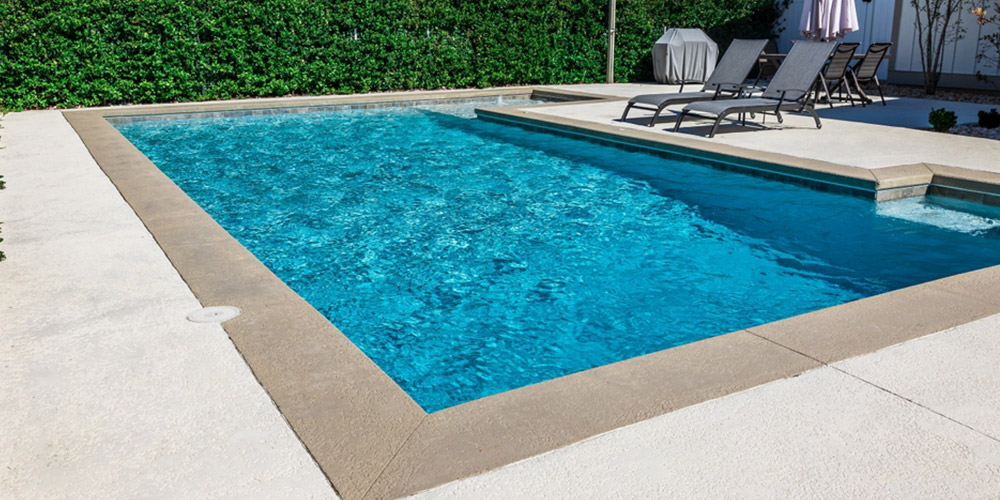
Deciding on Pool Options
In the end, there are a lot of different choices for your pool. Concrete is one of the most beloved options for inground pools. And you now have everything you need in order to judge whether it’s the option that’ll work best for you.


